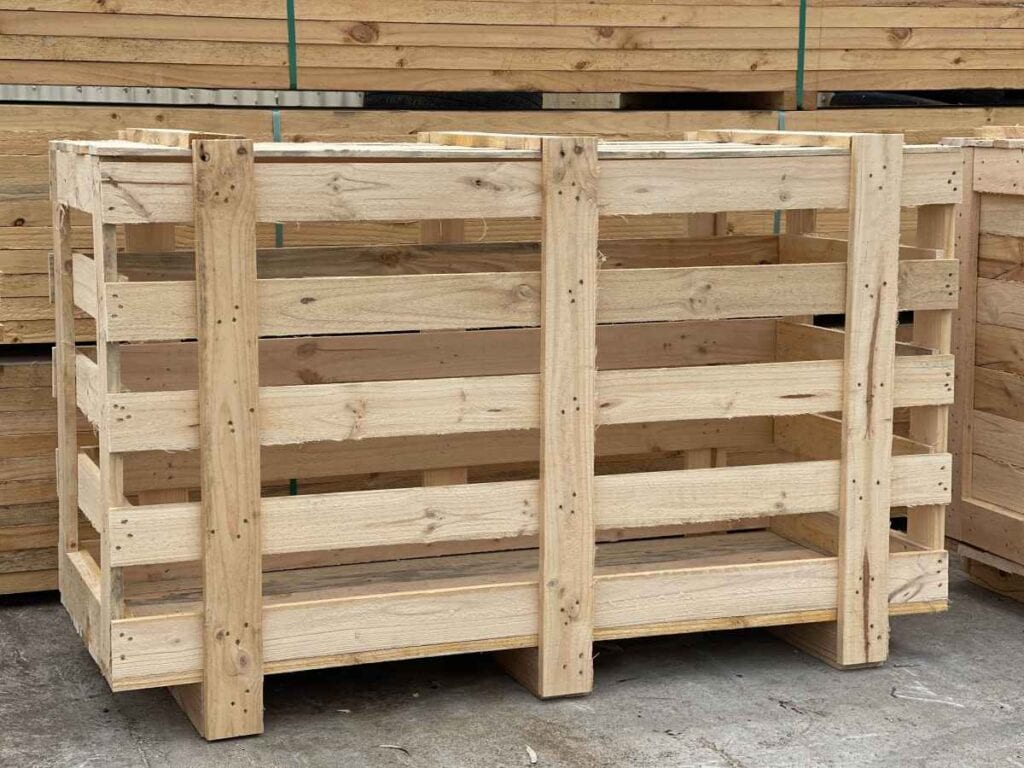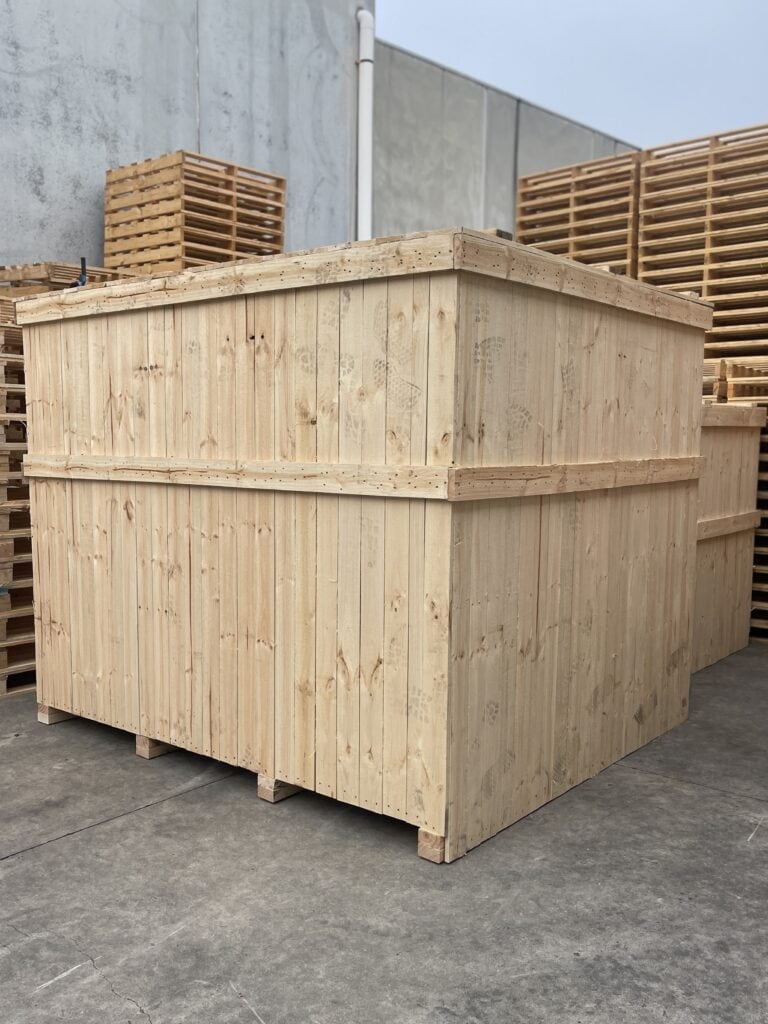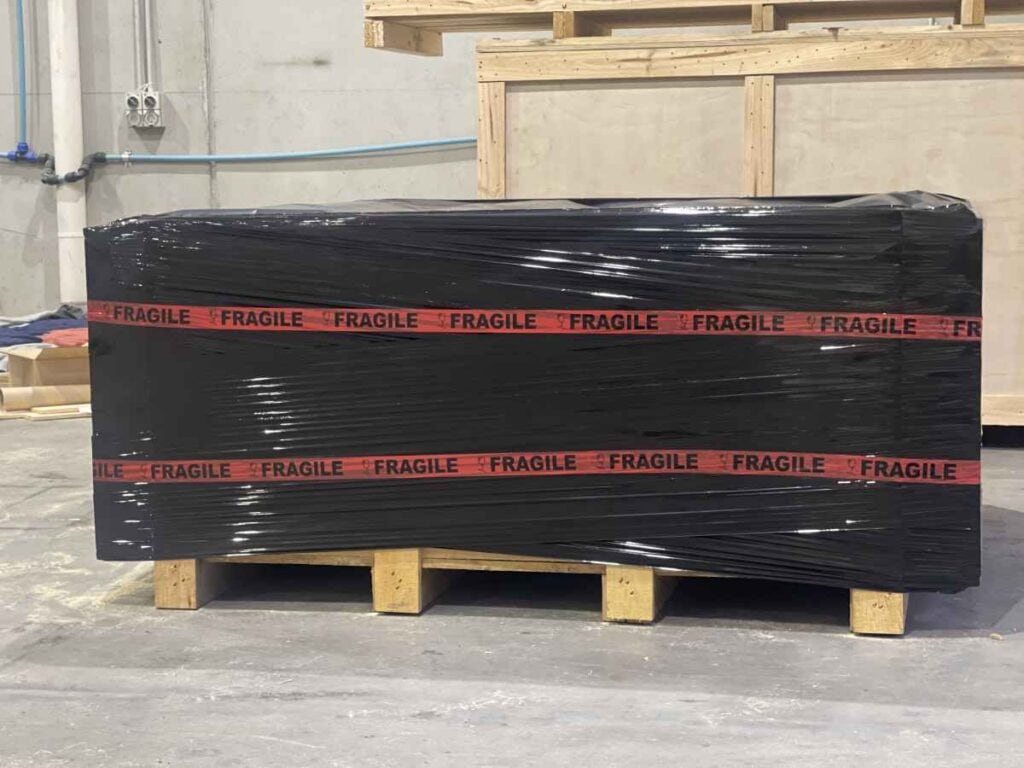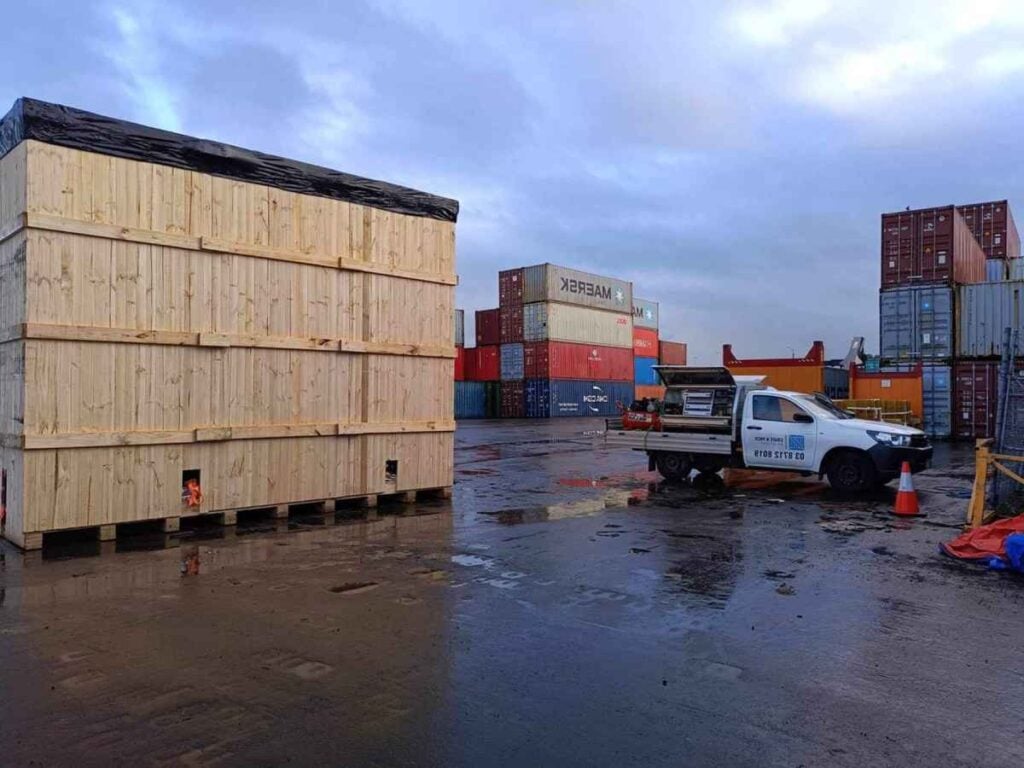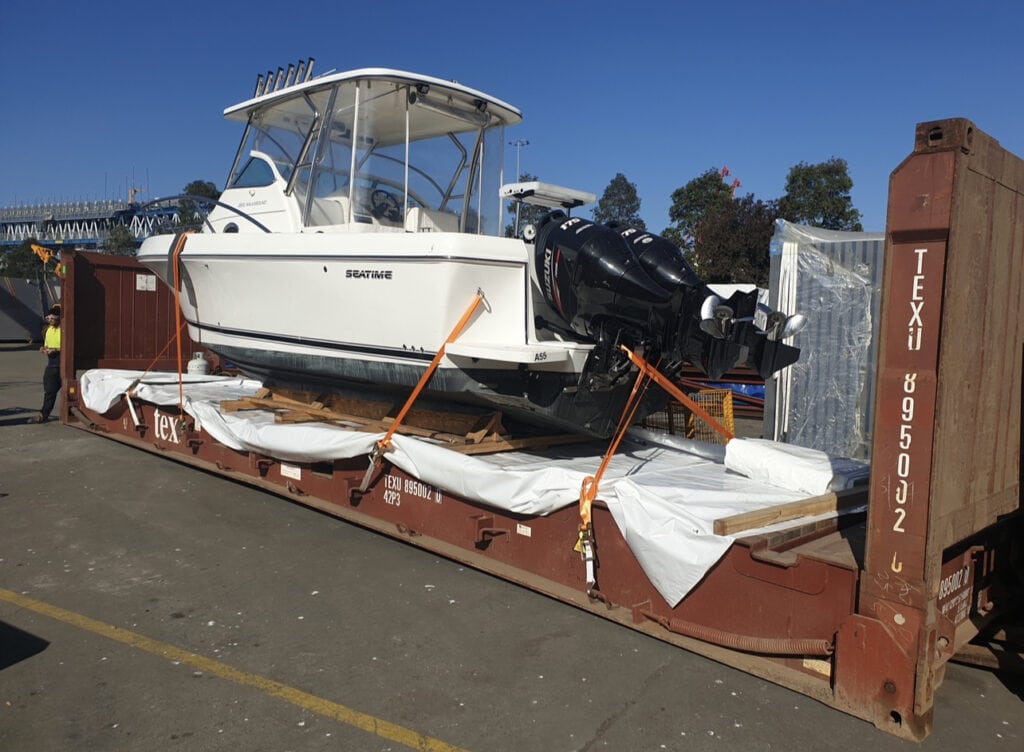Securing and protecting items through storage, transit, and handling via shrink-wrapping a pallet is a common practise in many different sectors. To effectively prevent moving, damage, and exposure to the weather, a plastic film is heated and shrunken firmly around the things on the pallet.
To ensure the safe and effective handling of your goods, knowing how to shrink-wrap a pallet is crucial, whether you're a business owner trying to simplify your operations or a person getting ready to move.
Picking the right shrink-wrap film is the first step in the process of shrink-wrapping a pallet. Because this film is available in a range of strengths and thicknesses, it may be tailored to the specific requirements of the load being transported.
After selecting the appropriate film, the next step is to arrange the goods on the pallet in a secure and well-organized fashion. Wrapping will go more smoothly and unevenness will be minimised if the products are neatly stacked and divided.
The shrink wrap material is unrolled and stretched over the pallet and its contents after the products have been arranged. Once the film has been fastened to the base of the pallet, it is slowly stretched and wrapped over the pallet's contents until it is completely encased.
Here's where things get interesting: the plastic sheet shrinks in response to the heat, forming a snug and secure bond between the pallet and its contents.
Depending on the size of the wrapping and the resources at hand, a heat gun or a dedicated heat tunnel may be used to apply the necessary heat.
Tips For Shrink Wrapping A Pallet Load
Pallet shrink wrapping is an art that, when executed proficiently, brings a host of advantages including load stability and protection. However, the effectiveness of this method is highly dependent on its correct application. This guide elucidates on the optimal techniques and equipment that can facilitate a smoother workflow in a warehouse setting.
Choosing the Right Foundation: Pallet Selection
Before one begins, it's vital to select a robust pallet capable of supporting the weight of the boxes or items intended for unitisation. The goods should then be meticulously organised on the pallet, ensuring they are positioned closely together to avoid gaps. This is critical, as gaps can result in the load shifting post-wrapping, thereby defeating the objective.
Elevate for Efficiency: Positioning the Load
To ease the physical toll and make the wrapping process more convenient, it's recommended to place the cargo on an elevated surface or a stack of unused pallets. Angling the pallet rather than laying it flat on the stack can further facilitate ease in accommodating corners during the wrapping process.
Safety First: Preparing the Wrapping Area
Before initiating the wrapping, ensure that the vicinity around the pallet is clear of tripping hazards. A portion of the shrink wrap should be rolled into a 'rope' shape to start the process, as it sticks to itself and eliminates the need for tying knots.
The Core of the Process: Wrapping Technique
Begin by wrapping the base of the pallet multiple times, tucking the edges of the film under the corners to bolster the load's stability during transit. It's essential to keep the film taut while wrapping. Progress upwards, ensuring that each layer overlaps the previous by approximately 50%. Skimping on the wrap is not advisable, as adequate layering adds to the load's stability.
Gauge Versus Containment Force
It’s not just the film's thickness that matters, but also the 'containment force', which is influenced by the tension applied during rotation and the number of layers used. Therefore, after reaching the top, reassess to determine if another layer of wrapping is necessary to reach all the way down to the base.
Sealing and Safety: The Final Touch
Once the load is deemed secure, use a pocket knife to tear the film and tuck the end under one of the side layers. Any loose ends or 'tails' should be neatly tucked away to avoid accidents involving forklifts or conveyors, which can hamper operational efficiency.

The Future: Automation Options
For rapidly expanding businesses finding themselves increasingly reliant on shrink wrapping, automated solutions such as rotary arm wrappers, pole wrappers, and turntable wrappers could be a wise investment. These machines can significantly streamline this essential operation, saving both time and labour.
You can make sure that the shrink-wrapping process is not only effective but also efficient, protecting both the load and the operational routine.
Pallet Wrapping: Common Mistakes and How to Avoid Them
Pallet wrapping, while appearing straightforward, is replete with potential pitfalls that can jeopardise the safety of an entire shipment. These errors can be both costly and time-consuming, issues that any company would prefer to avoid. Below, we examine the frequent missteps in pallet wrapping and offer expert advice on how to steer clear of them.
Incorrect Selection of Stretch Wrap
Choosing the wrong type or size of stretch wrap can have a domino effect, leading to material wastage, a heightened risk of accidents, and unnecessary repair costs. Therefore, knowledge of the various kinds of stretch wraps and their appropriate uses is essential. One must also be attentive to the dimensions of the stretch wrap, as an ill-fitting wrap could compromise load containment, thus squandering not just material but also time and finances.
Before commencing the wrapping procedure, it is imperative to consider the specific requirements of the cargo. Factors such as the dimensions of the pallets, and the shape and size of the goods being transported should inform the choice of stretch wrap. Should there be any uncertainty, consultation with a packaging specialist or usage of a stretch wrap calculator is highly advisable.
Stretch Film Deterioration: Causes and Implications
A frequently observed issue in pallet wrapping is the fraying or tearing of the stretch film, which raises questions about the shipment's safety and integrity. Ignoring such deterioration could lead to myriad problems, including but not limited to, workplace accidents, damaged products, and operational delays.
Primary reasons for such film failure include:
- Load Profile Hazards: Sharp edges or protrusions in the load can compromise the integrity of the stretch film. Therefore, one should be vigilant for any cuts, nicks, or accumulation of resin when applying the wrap.
- Incorrect Machine Settings: Consistency in settings is crucial. Inadequate containment force or issues such as dragging film tails could imperil the stability of the load during transit.
Pallet Selection and Its Consequences
Choosing an inappropriate pallet for your shipment can open a Pandora's box of issues, ranging from product damage during transit to the risk of severe injuries when handling unstable pallets. Therefore, it's advisable to measure the goods beforehand to ensure that the pallet is adequate in size and structurally sound. Reusing older pallets may seem economical, but a thorough inspection is essential to ascertain they are still fit for purpose.
The Art of Effective Pallet Stacking
Contrary to popular belief, the success of pallet stacking does not solely depend on whether all cartons fit on the pallet. Proper weight distribution is critical, with the heaviest boxes ideally placed at the bottom. Inadequate stacking methods, such as 'pyramid stacking,' can compromise the load's stability and risk damage to goods.
To improve load security, consider the following:
- Stack boxes from corner to corner in aligned columns for maximum strength.
- Avoid positioning box corners in the gaps between pallet deck boards.
- Use flat cardboard layers to separate every third layer, improving weight distribution and protecting the lower layers.
- Ensure the top layer is flat, especially if additional cargo may be stacked on top of your pallet.
By adhering to these guidelines, one can significantly reduce the likelihood of incurring damage, thereby ensuring a safer and more efficient shipping process.
Benefits of Shrink Wrapping Your Pallets
One of the most secure methods of transporting things is by using pallets. When shipping abroad, where your product may be reloaded onto numerous new trucks, pallets elevate your items onto a firm platform and keep everything intact if packed well.
A pallet can be used to ship just about anything. This is why it's beneficial to send large quantities of goods by land transport. Your pallet's contents might be even more safe if you use shrink wrap. Consider the following information when deciding whether or not to use shrink wrap when packing your pallet.
No More Slipping Packages
Pallet jacks and forklifts are used to safely load and unload pallets on a horizontal plane. In most cases, this indicates that your belongings are secure. However, accidents can sometimes be unavoidable. For example, the forklift's prongs might not have been inserted all the way.
The goods you wrap with shrink wrap will be securely contained. Shrink wrap packaging is useful for keeping things together during transport.
This signifies that the bulk of the pallet's load is concentrated in the middle. When the entire load can't slip off at once, accidents are less likely to happen.
Another Perk Is That Your Food Will Stay Fresher For Longer
Using shrink wrap to store perishable items is highly recommended. This is because insulated and sealed areas will keep the cold from the refrigerator inside and will keep out pests. In addition, if the weight on each pallet is distributed uniformly, the fresh produce in its packaging will not shift around as much during transport. Less food is wasted if this prevalent cause of bruise is eliminated. And reducing food waste benefits both the economy and the environment.
Lessen The Likelihood Of Damaged Boxes
The proper sealing of your boxes is of the utmost importance. Nothing should be entering or leaving. If you're transporting delicate items like jewellery, a puncture or other damage could result in the loss of your precious cargo on a jarring road or motorway. Damage could occur to fragile objects, and pollutants could be introduced to perishables like fruit and vegetables. Shrink wrap has a high level of durability. Protecting your boxes in whatever way you can is a good idea.
It Helps Avoid Accidents With Spillage
Sending goods to a storage facility or the Amazon Fulfilment Centre? No matter how well-maintained your facility is, water may still find its way inside during rainy times. Long trips also present an increased risk of liquid spillage. If there are any unwelcome liquids, shrink wrap will keep them out.
Conclusion
In many industries, shrink wrapping is a popular way to secure and protect items while they are being stored, moved, or handled. In the process, a plastic film is heated and wrapped around the things on the pallet to protect them from damage and the weather. The right picture is picked out, and the goods are put on the pallet in a safe and organised way. The shrink wrap is unrolled and stretched over the pallet and its innards to make a secure bond. To get the right amount of heat, you can use a heat gun or a heat tunnel.
Pallet shrink wrapping keeps loads stable and protects them, but it only works well if it is done right. For a warehouse to run more smoothly, it's important to choose the right base, put the load on an elevated surface, set up the wrapping area, and wrap the load more than once. The containment force is also very important. It depends on how many layers are used and how tight they are pulled during spinning.

Automated options like rotary arm wrappers, pole wrappers, and turntable wrappers can make shrink wrapping much faster and easier, saving a lot of time and work. Common mistakes in wrapping a pallet can put the safety of a package at risk and cost money and time. To avoid making these mistakes, it is important to use the right tools and follow the right processes.
Choosing the right stretch wrap is important if you want to make sure that your box stays safe and intact. It should be chosen based on the specific needs of the product, such as the size and shape of the pallets and the goods being moved. Stretch film that is getting old can cause accidents at work, damage to goods, and delays in operations.
Pallet choice is also important because it can lead to a Pandora's box of problems, such as damaged goods during shipping or serious accidents from handling unstable pallets. To make the load more secure, stack the boxes corner to corner in straight columns. Don't put the corners of the boxes in the spaces between the pallet deck boards. Separate every third layer with flat cardboard layers, and make sure the top layer is flat.
When you shrink wrap your pallets, you can stop packages from falling off, keep food fresher for longer, make it less likely that boxes will get broken, and stop spills. Boxes must be properly sealed because holes or other damage could cause valuable goods to be lost. Since shrink wrap is very strong, it is a good way to protect your boxes.
In the end, choosing the right stretch wrap, choosing the right crate, and using shrink wrap can greatly reduce the risks of shipping and make the process safer and more efficient.
Frequently Asked Questions
Shrink wrap is highly effective in guarding against environmental damage. It protects against dirt and humidity; your merchandise will be safe from the elements. Shrink wrap can also prolong the life of products that would otherwise spoil quickly such as perishable foods.
As it shrinks, it conforms to the shape of your object and seals itself. You can waterproof, weatherproof and tamperproof just about anything you have. Since there is no restriction on size to shrink wrap items, you now have a way to protect even the bulkiest of items.
A shrink wrap material is tough, weather-resistant polythene which is widely used in construction and renovation industry to protect an under construction buildings or structure from the climate changes as they are not very strong to sustain unfavorable weather conditions.
Shrinkwrap does a great job keeping boats clean and protected but it also is a single use plastic that generate tons of waste. The manufacturing of the wrap also contributes to air pollution. The Maryland Clean Marina Program is taking a two pronged approach to prevent this plastic waste and recycle what there is.

